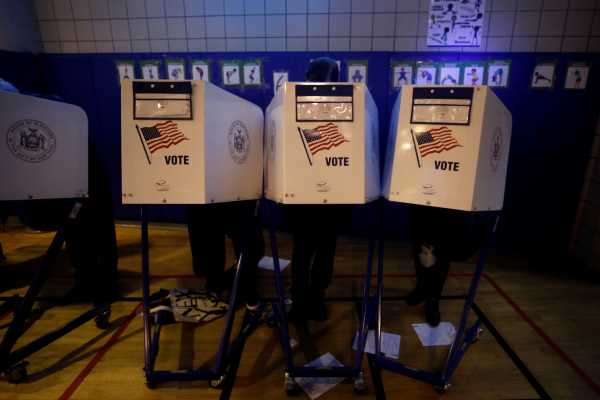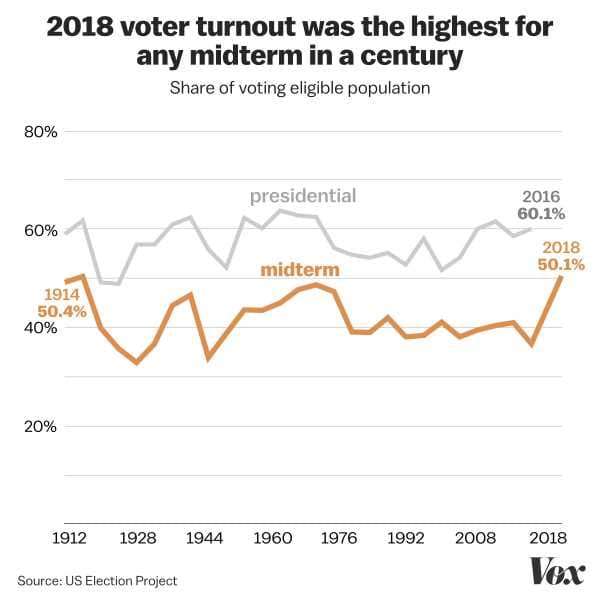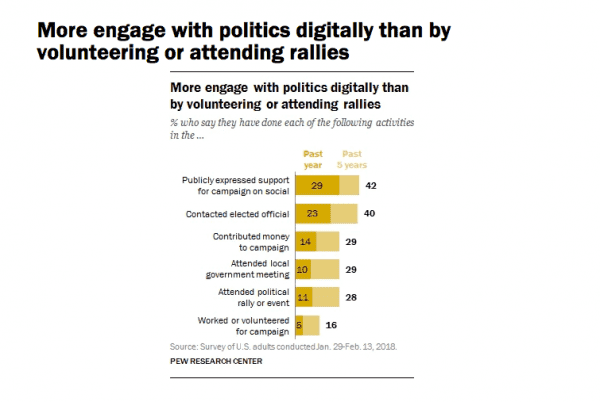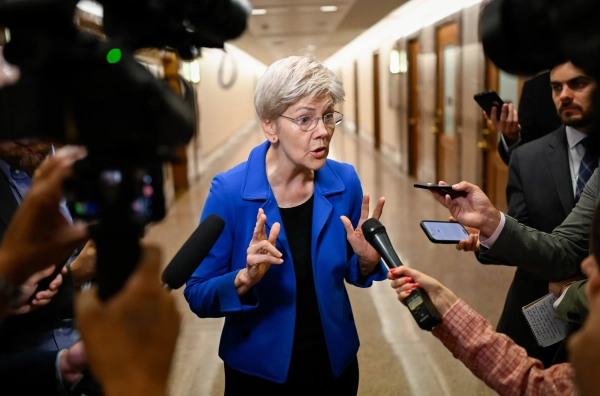
Americans are more civically engaged than they have been in more than 100 years.
The two years between President Donald Trump’s win in 2016 and the 2018 midterms ushered in a new era of political engagement in America, not seen since the early 1900s and the 1960s civil rights and anti-war movements.
That culminated in November’s midterm elections. While House Democrats picked up 40 seats in a wave election (they didn’t fare nearly as well in the Senate), an important number to focus on is the sheer number of people who voted in 2018, compared to past midterms.
50.1 percent of the voting-eligible population in the US turned out to cast their ballots in this year’s midterms, according to the United States Elections Project, a database about the United States electoral system run by University of Florida political science professor Michael McDonald. In raw numbers, that means 118,044,470 votes were cast.

It’s important to put this in context: 2018 saw the highest percentage of midterm voter turnout since 1914, when 50.4 percent of eligible voters went to the polls, as Vox’s Emily Stewart noted. (The next-highest rate was in the 1966 midterms, when 48.7 percent of eligible voters voted in the midterms.) And 2018 far surpassed the dismal turnout rates in the 2010 and 2014 midterms, the latter of which was only 36.7 percent — the lowest in 72 years.
1914 was the first year that members of the US Senate were elected directly by the people, rather than by state legislatures. And 1966 saw America ensconced in the middle of the Vietnam War as well as the civil rights movement — so both years were times of exceptionally high political engagement in the United States.
In other words, President Donald Trump certainly had a way of motivating voters in 2018.
“People realized how do or die these elections were going to be,” Jiggy Athilingam, the state and local policy manager for national activist group Indivisible, said. “In 2017 it was a lot of rapid response to crisis. People had gotten their sea legs by then and realized the way to stop the crisis was win elections.”
Voter engagement doesn’t have to just be measured in voting
Voter turnout numbers are the easiest way to measure just how politically engaged Americans were in 2018. But all of the work that went into the final result is political engagement — political organizing, phone banking, canvassing, protesting, contacting elected officials, or donating money to a campaign.
Americans also participated in these activities in high numbers in 2018, according to an April survey by Pew Research Center.
Pew found that 67 percent of the people surveyed said they engaged with politics in at least one of these ways since 2013. And 46 percent reported political engagement in some form during the past year.

Of those Pew surveyed who had donated money, the vast majority made donations less than $250. This speaks to a larger trend, as small donations proliferated during the 2018 elections. Democrats raised hundreds of millions from small donations. Combined with larger donors and PACs, this gave Democrats a distinct fundraising advantage in many races.
And Pew surveys also found that Trump and control of Congress were a hugely important factors for likely voters in the midterms. In one June survey Pew did, 60 percent of likely voters surveyed said they considered their vote in the midterms a symbolic vote for or against the president (34 percent were against him, while 26 percent were for him).
Based in California, Indivisible’s Athilingam saw that engagement play out on the ground for months. California saw some stunning political change, with Democrats essentially flipping the longtime Republican stronghold of Orange County blue.
“The groups were nonstop. It was incredible to watch, actually,” Athilingam said. “They’ve been basically knocking doors the entire year.”
They aren’t done, she added. Groups are gearing up to make plans for state and federal politics alike in 2019, signaling their will to political leaders across America.
“They’re already convening across their states to make plans for 2019,” Athilingam said. “The elections were good ways to start getting involved, but now they’re here and they’re going to be here moving forward.”
Sourse: vox.com






